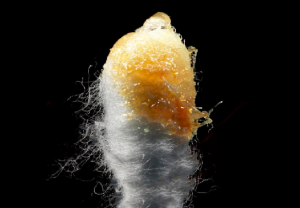By Larry Billinger
Having resided in China for eight enriching years, I became accustomed to and deeply integrated into the vibrant tapestry of local customs, gastronomy, and traditions. However, the revelation about a biological difference as seemingly trivial as earwax between me and my Chinese friends was not something I ever anticipated learning about. When my wife and I stumbled upon this piece of information, we were left utterly bewildered, a sentiment echoed by my equally stunned co-workers when consulted about this peculiar revelation.
It was during a conversation in our Church’s Growth Group that this unanticipated topic surfaced. The discussion meandered from the cultural habit observed among some Chinese men, who fashion elongated pinky nails seemingly purposed for earwax excavation, to the metal tools designed to scoop out earwax, often seen hanging alongside keys. It was here that a member professed to having “Asian earwax,” although he had no Asian ancestry. Shocked and intrigued, a frenzied fact-checking Google session ensued, and what we uncovered was nothing short of astonishing.
The narrative of earwax, it turns out, is not as mundane as one would presume. It has a fascinating story to tell, one interwoven with genetics, evolution, and regional adaptation. Let’s delve into this sticky subject and uncover the scientific truths behind the differences in earwax between Asians and Caucasians.
A Sticky Subject: The Two Types of Earwax
Humans predominantly have one of two types of earwax: wet and dry. Wet earwax is sticky and yellowish-brown in color, whereas dry earwax is flaky and pale. This difference is caused by a single gene, the ABCC11 gene, to be specific.
Genetics at Play
The presence or absence of a specific variant of the ABCC11 gene determines earwax consistency. People with the AA or AG variant at a specific location on this gene typically have wet earwax, while those with the GG variant have dry earwax. Interestingly, this same gene is also responsible for certain other traits, including underarm odor.
A 2006 study found that dry earwax is common in East Asians but rare in Europeans and Africans. The breakdown goes something like this:
- Almost all Koreans and Northern Chinese have dry earwax.
- 80-95% of Southern Chinese have dry earwax.
- Most Europeans and Africans have wet earwax.
Evolutionary Theories
Why would such a seemingly trivial trait vary across populations? Researchers speculate that it’s tied to the environments our ancestors inhabited. One theory is that dryer earwax was more adaptive in colder climates, preventing sweat and moisture from being trapped and thereby reducing the risk of frostbite in the ears. Another theory suggests that the dry variant may reduce the risk of fungal and bacterial infections, which could be advantageous in certain environments.
Beyond Earwax: Other Implications of the ABCC11 Gene
The ABCC11 gene doesn’t just stop at determining earwax type. It has also been linked to the production of underarm sweat and body odor. Those with the dry earwax variant tend to produce less underarm odor than those with the wet type, given the reduced number of apocrine sweat glands in their underarms.
Conclusion
Earwax, as mundane as it may seem, tells a compelling story of human genetics and evolution. This revelation about earwax differences is more than just a party fact; it’s a testament to the intricacies of our genetic makeup and how tiny variations can lead to distinct phenotypic outcomes. The next time you think about earwax or catch a whiff of underarm odor, remember: there’s a fascinating genetic story lurking beneath!
Sources:
- Yoshiura, K., Kinoshita, A., Ishida, T., Ninokata, A., Ishikawa, T., Kaname, T., … & Niikawa, N. (2006). A SNP in the ABCC11 gene is the determinant of human earwax type. Nature Genetics, 38(3), 324-330.
- Nakano, M., Miwa, N., Hirano, A., Yoshiura, K., & Niikawa, N. (2009). A strong association of axillary osmidrosis with the wet earwax type determined by genotyping of the ABCC11 gene. BMC genetics, 10(1), 1-6.
- Image: Beat Ruest, CC BY-SA 4.0 https://creativecommons.org/licenses/by-sa/4.0, via Wikimedia Commons



